Los Angeles Theatre
1931 – S. Charles Lee
615 South Broadway – map
Declared: 8/15/79
What perfect timing. Just as I was wondering if I’d have the chance to get inside the Los Angeles Theatre in time for this entry, the Los Angeles Historic Theatre Foundation announced they’d be having their March meeting/tour at the landmark just in time to coincide with my post about it. Thanks, LAHTF.
In 1930, movie mogul William Fox – banged up from a fatal car crash and nearly $100 million in debt – agreed to allow independent exhibitor H.L. Gumbiner to own and operate a movie theater on a section of his property in downtown L.A. Fox’s lot (not to be confused with Fox’s lot) was a big one, located on Broadway between Sixth and Seventh Streets and stretching right through St Vincent Court back to South Hill Street. Gumbiner, who owned the Cameo (HCM No. 524) and Tower (HCM No. 450) theaters, would develop part of the section fronting Broadway. Having already worked with him on the Tower Theatre, Gumbiner hired architect S. Charles Lee to create what was to be the final and most spectacular of downtown’s movie palaces. (Lee was born Simeon Charles Levi in 1899 in Chicago. If you don’t believe he was the king of theater design, look at this Cinema Treasures list of his movie houses. He died in 1990.)
Now, before Fox bought it, the land was owned by the family of architect S. Tilden Norton. Initially, newspapers announced that Norton would be the one designing the theater, with Lee and Frederick H. Wallis as consulting architects. Ultimately, though, it was Lee who designed the Los Angeles Theatre while Norton was responsible for the adjoining retail/office buildings including the very nice thirteen-story Fox Building on South Hill. Maybe the confusion stemmed from both men sharing the first name of S.
Employing thirty-two draftsmen working in two shifts, Lee had the plans for the height-limit theater wrapped up in a mere ten weeks. The building is in the Baroque/French Renaissance style and takes much of its look from San Francisco’s Fox Theatre. With 600 people rushing to complete the theater for its scheduled opening, the Sumner-Sollitt Company, the project’s general contractors, finished the building in five months.
Where to start? Out on the sidewalk of Broadway, I guess. It’s where you’ll find the terrazzo pavement that leads you into the opulent fifty-foot-tall lobby, complete with crystal chandeliers and a grand staircase leading up to the mezzanine level. Here, on the mezzanine, stands a three-tiered marble and crystal fountain.
Heading downstairs, there’s the intermediate lounge. You can still see the window to the theater’s old radio station.
Another level down is the basement containing the main lounge with its glass ceiling. Back in the day, after the night’s films had ended, the theater would move its orchestra to the lounge, roll up the carpets, and hold dances on the parquet floor.
Off the main lounge are the ladies’ restroom (featuring different-colored marble in each stall), the cosmetic room, and my favorite area of the theater, the children’s playroom. Designed as a circus tent, the nursery’s murals by Anthony Heinsbergen are remarkably in pretty good shape.
The main lounge also featured what’s my second favorite feature of the theater, a screen that allowed those in the lounge to watch the movie as it was being shown in the auditorium. This all happened through a prism and a series of mirrors, a system invented for the Los Angeles by Francis Pease.
Finally, from the main lounge you’d enter directly into the theater’s walnut-paneled café and soda fountain.
Also in the basement is the men’s room complete with shoe-shining parlor. There used to be a barbershop, too. As for the urinals, they’re far too nice to pee in.
And while I don’t have a shot of them here, the theater also had a pair of “crying rooms”, which gave moms of howling babies the opportunity to slip away into a glass-enclosed booth, continue to watch the movie with earphones, and do whatever it is mothers do to mollify kids crying at the movies. But here’s a shot of the phone booths in the main lounge:
The auditorium itself seats more than 2,000 people. Originally, the main floor had eight aisles so that there were no more than six seats in a row, “… doing away with the annoyance caused by late arrivals.” Aisles were lit with blue neon tubes planted in the floor. And there are more striking Heinsbergen murals decorating the ceiling.
And even though the Los Angeles Theatre was built primarily as a movie house, there is full stage (60’ x 27’), orchestra pit, and several dressing rooms for theater more legitimate.
The B.F. Shearer Corporation was responsible for the theater’s curtains, drapes, and carpets. The stage’s embroidered curtain is yet another highlight of the landmark. It was “… designed to give, at a moment’s glance, the feeling, spirit, and the accomplishments in architecture during the reign of Louis XIV.” There are several scenes in the life of the Sun King stitched into the curtain, including one with his mistress, Louise de la Valliere. For some reason, the curtain was never fully embroidered. What was finished, however, is worth the price of admission.
The cutting-edge theater opened with an $80,000 air-conditioning set-up and a $34,000 Westinghouse switchboard allowing ushers to keep track of seat counts.
The Los Angeles Theatre, “the Theatre Unusual” and “the ultra of ultras in its modernistic appointments and its conveniences”, opened on January 30, 1931, with the premiere of Charlie Chaplin’s City Lights. (Two notes: first, the film, not silent but sans dialog, failed to take advantage of the theater’s state-of-the-art sound system. Second, it took nearly three years to produce City Lights – about six times the amount of time to build the landmark theater itself.) Charlie Chaplin attended opening night, of course (and got royally cheesed when Gumbiner stopped the movie midway to rave about the theater), as was Pasadena resident Albert Einstein.
The restaurant kitchen.
More than 25,000 people thronged Broadway that night, effectively shutting down center city. The L.A. Times reported “the whole traffic on the chief downtown thoroughfares for a mile on either side of the theater was at a complete standstill for more than two hours, store windows were broken, clothes were torn, windshields in cars were smashed and many women fainted in the milling multitudes gathered to make a movie holiday.”
Entrance to the ladies’ room and the washroom.
Like I said, while mainly for movies, the Los Angeles also featured live stage shows and prologues. Albert E. Short, who also conducted the theater’s orchestra, put these on originally. The performances included casts of between thirty and fifty people, “including at least ten principals.” Premier night, the stage presentation was “The Little Things in Life” inspired by the Irving Berlin ballad.
H.L. Gumbiner’s brother, Robert, was the Los Angeles’s resident manager and Harry M. Rosenbaum was its secretary-treasurer. Sam B. Cohn was in charge of advertising and publicity.
The Depression wasn’t kind to Gumbiner, his company going bankrupt just three months after the theater opened. By the end of the year, the Los Angeles Theatre had shut its doors. William Fox soon re-opened it as a second-run house, running it until 1939 when Metropolitan Theatres took over the lease. Metropolitan continued the theater as a second-run house until 1944 when they switched it back to first-run pictures. Fox West Coast operated the theater beginning in 1949 as the major studios were forced to divest their theater holdings. They ran the Los Angeles until 1962. It was then the theater’s future looked sketchiest, but Metropolitan Theatres came back into the picture, again running first-run films, including features from Mexico and English-dubbed Spanish films. The Los Angeles Theatre closed in 1994.
Concession stand.
The Los Angeles Theatre today is one of four movie palaces in downtown owned by the Delijani family and Delson Investment Co. Events are still held there, and it’s used frequently for film shoots. According to the ultimate authority on the movie palaces of downtown L.A., Jackie Chan, the Los Angeles Theatre can be seen in the movies Batman Forever, Alien Nation, Man on the Moon, Houdini, Escape from LA, Chaplin, Charlie's Angels II, and The Prestige. It also makes appearances in New York, New York and 1941.
Backstage stuff.
The Los Angeles Theatre, listed on the National Register of Historic Places, has a very cool homepage. Especially take note of the nifty 3D gallery.
The top shot is from St Vincent Court and Sixth Street. The marquee shows A Funny Thing Happened on the Way to the Forum. Marquee letters below.
The Los Angeles Historic Theatre Foundation is hitting the Tower, the Rialto, and the Olympic theaters on April 18. If you missed the Los Angeles Theatre event and are eager to visit the landmark, make sure you buy tickets for the L.A. Conservancy’s Last Remaining Seats. The Los Angeles Theatre will screen Cabaret on June 10 and A Streetcar Named Desire two weeks later.
Thanks to the California State Library for all the black and white shots. They’re part of the Mott-Merge Collection from early 1931.
Sources:
“Broadway Theater to be Erected” The Los Angeles Times; Apr 27, 1930, p. A1
“Construction Under Way on Theater Building” The Los Angeles Times; Aug 10, 1930, p. D3
“Innovations Mark Newest Theater” The Los Angeles Times; Dec 4, 1930, p. A3
Scheuer, Philip K. “Theater Ideal Soon to Open” The Los Angeles Times; Jan 18, 1931, p. B11
“Los Angeles Theater Opens Tomorrow Night” The Los Angeles Times; Jan 29, 1931, p. A8
“Stage Shows also Planned” The Los Angeles Times; Jan 29, 1931, p. A8
Schallert, Edwin “Premier Jams Broadway” The Los Angeles Times; Feb 2, 1931, p. A7
“Preview Pandemonium” The Los Angeles Times; Feb 2, 1931, p. A4
Thomas, Kevin “Los Angeles Theater Has Cloudy Future” The Los Angeles Times; Feb 18, 1963, p. A1
Up next: (Site of) Masquers Club Building



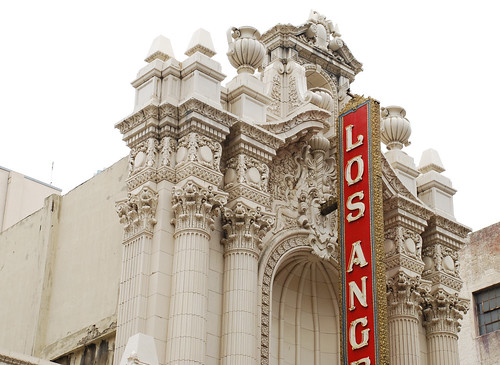
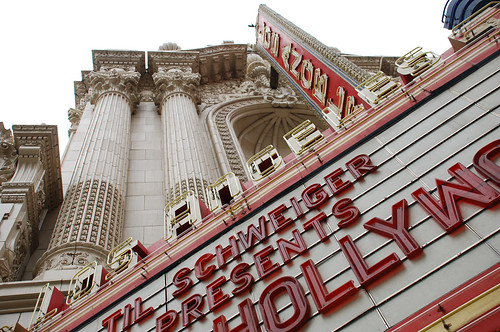
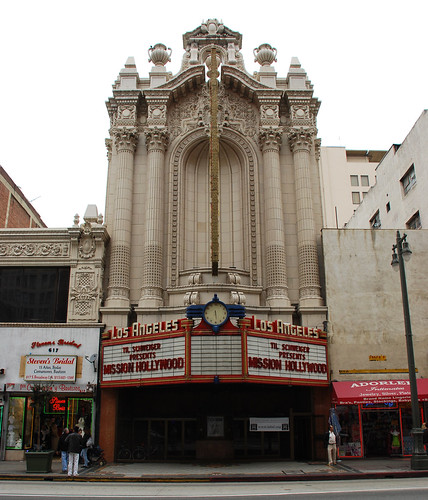
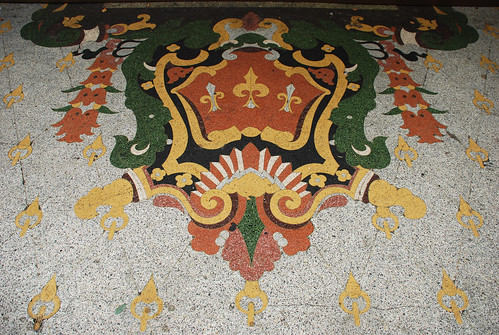
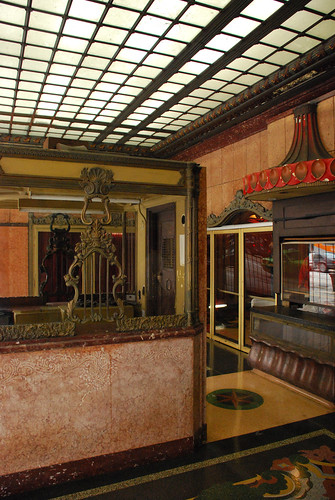

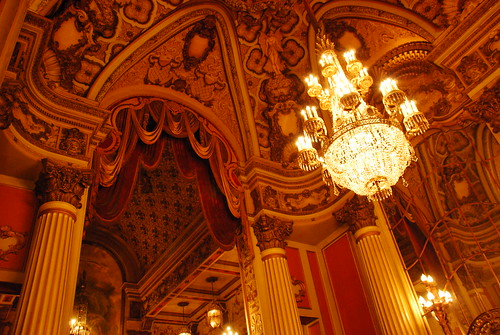
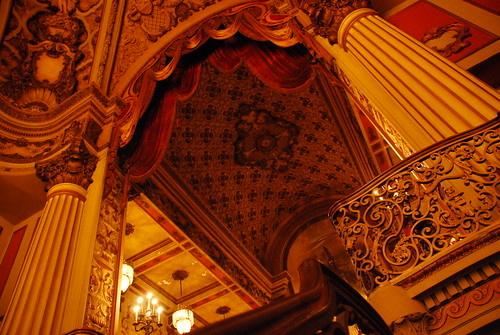
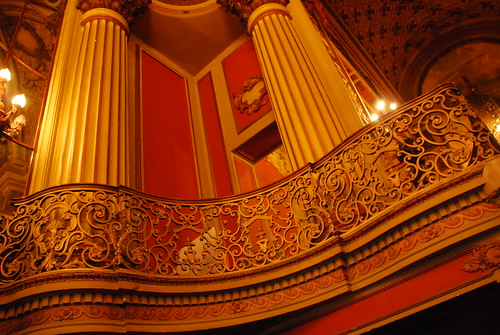
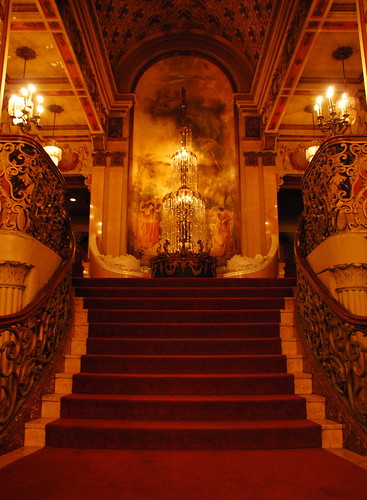
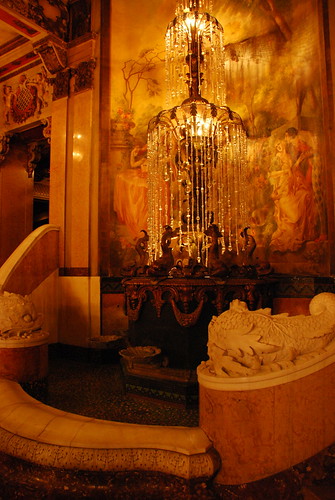
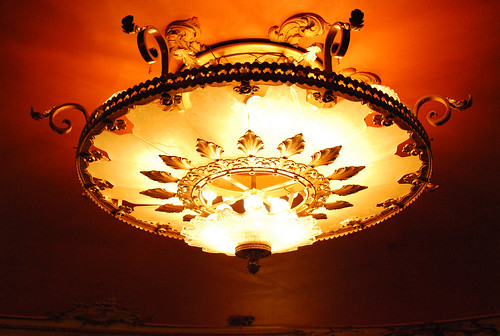
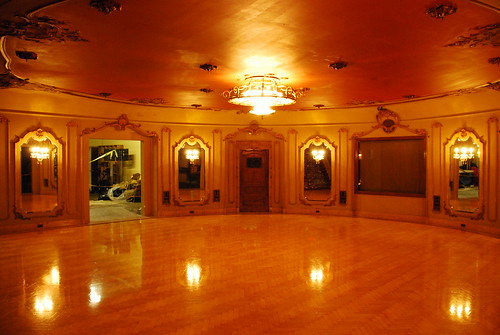
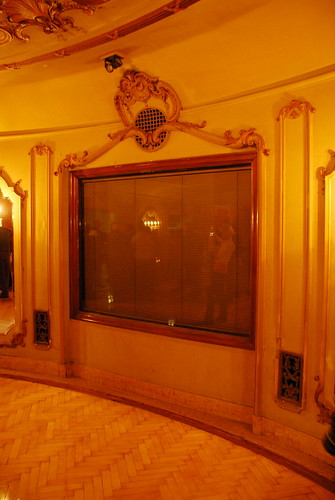
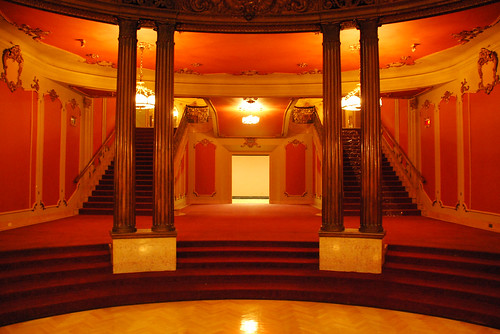
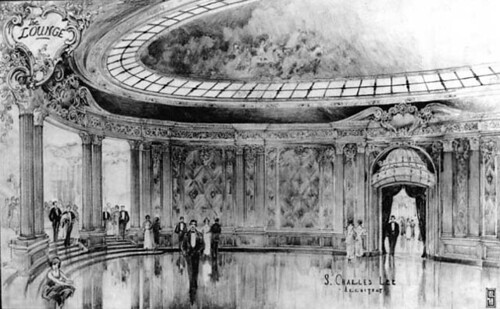
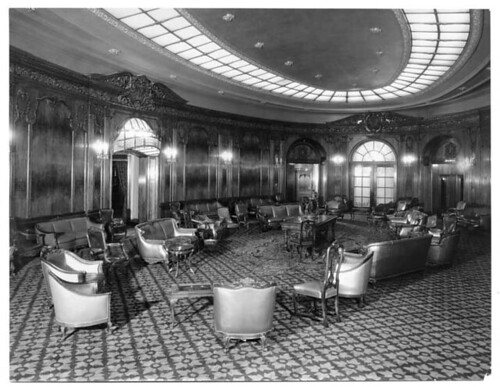


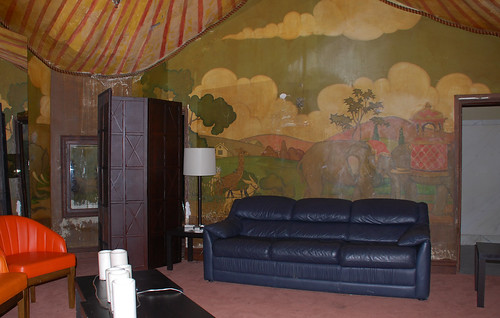
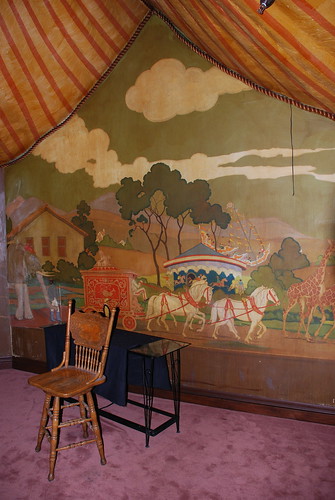
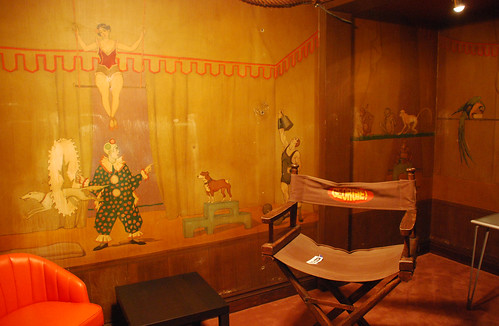
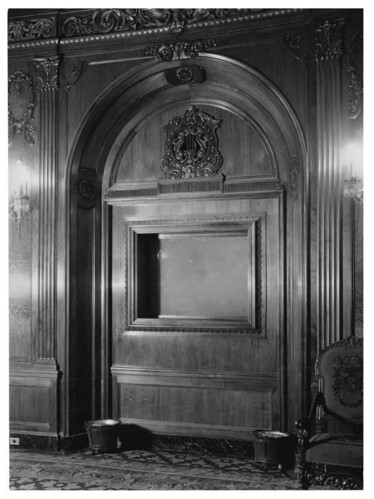
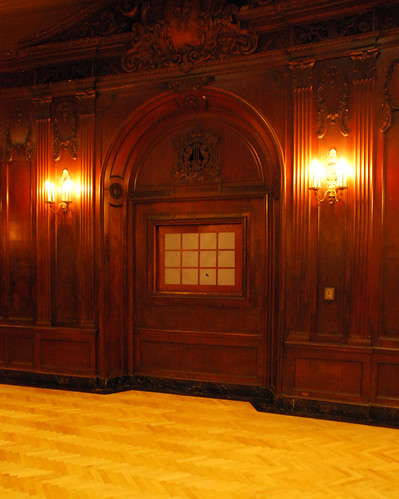

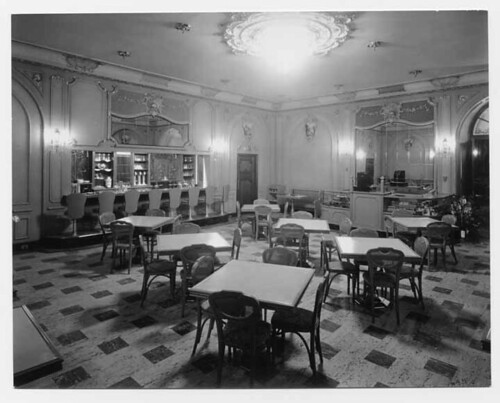
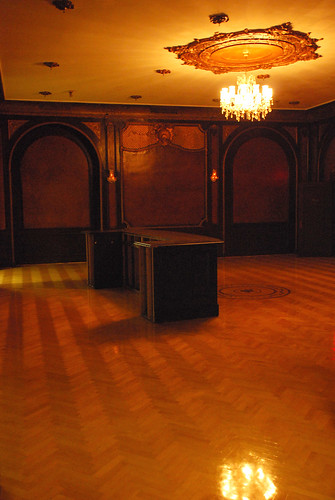
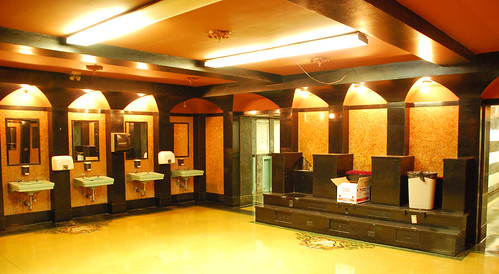
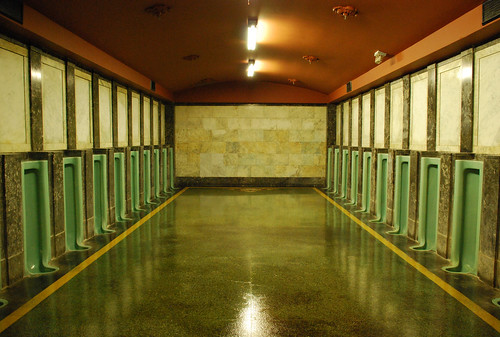
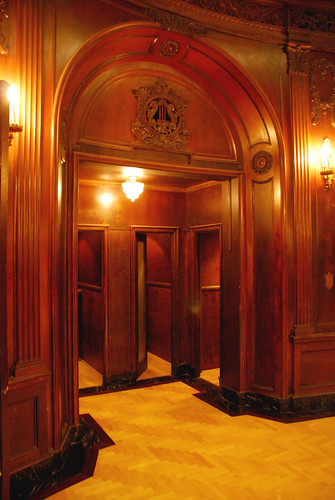
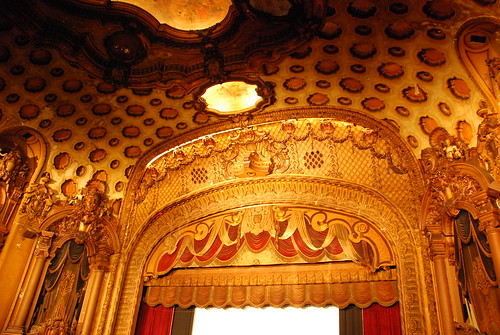
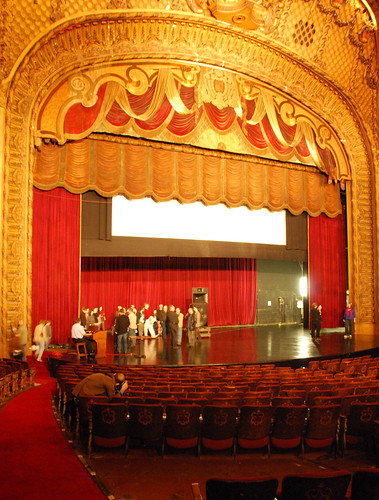
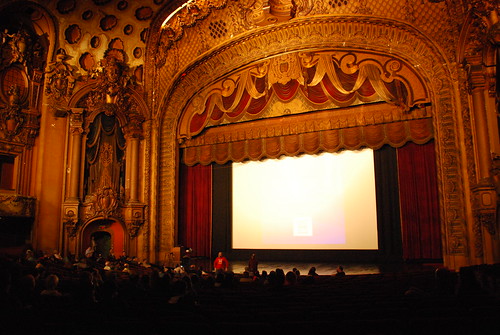
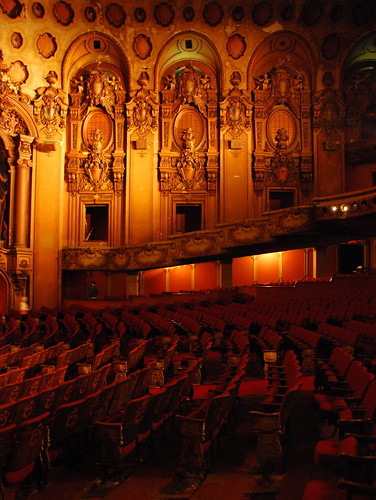
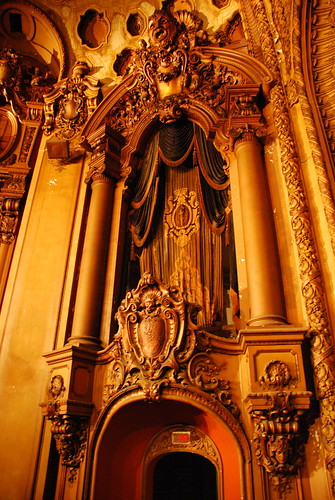
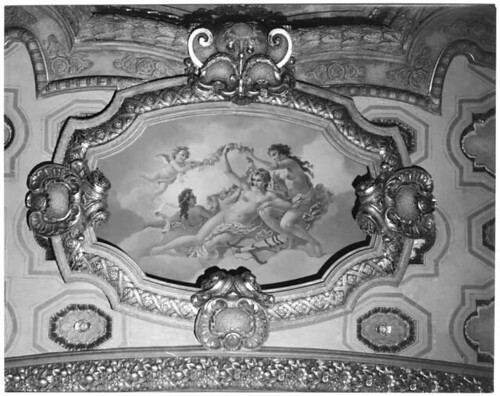
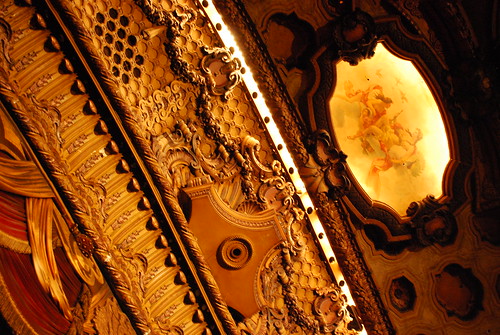

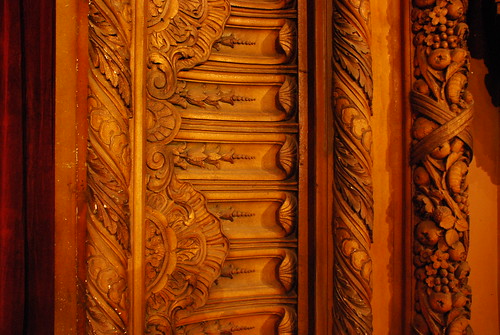
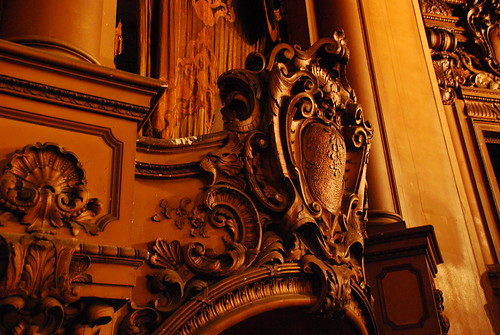
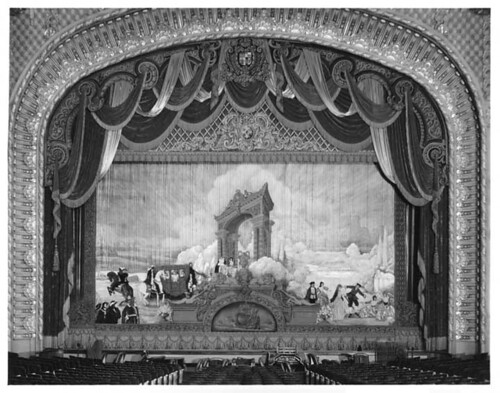

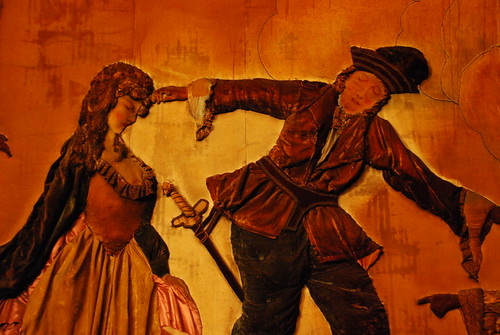
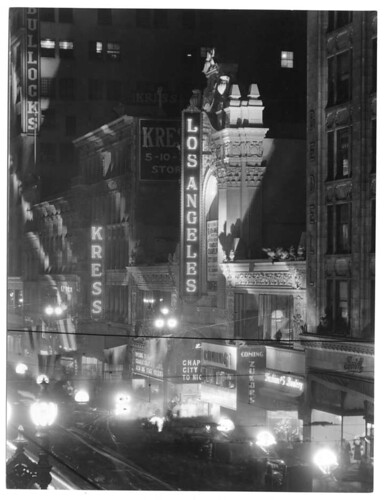
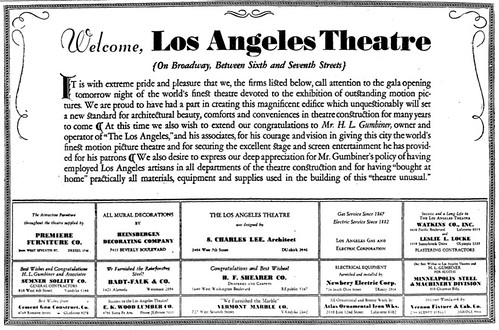
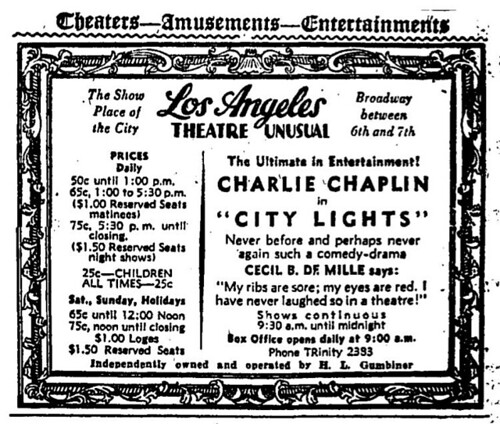
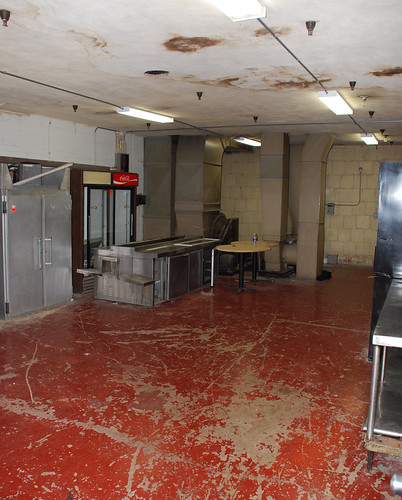
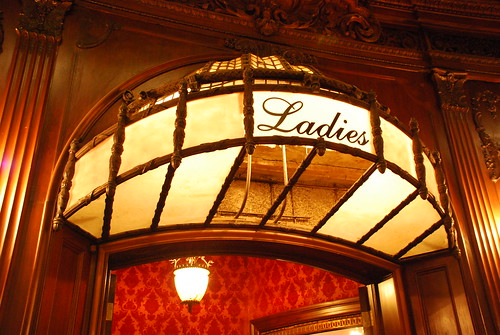

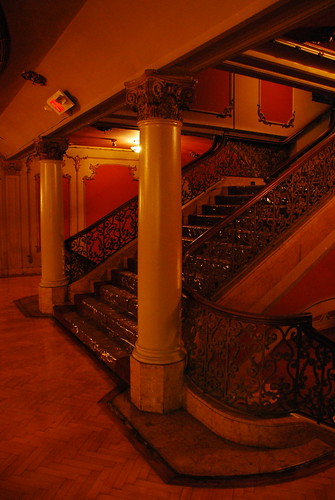

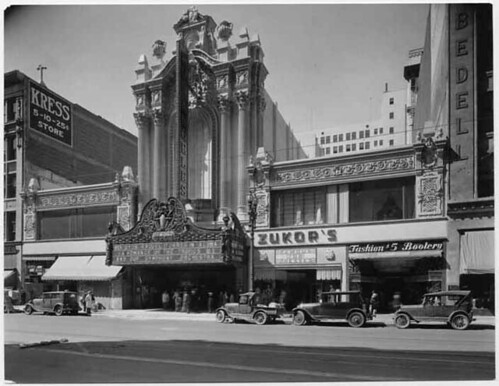
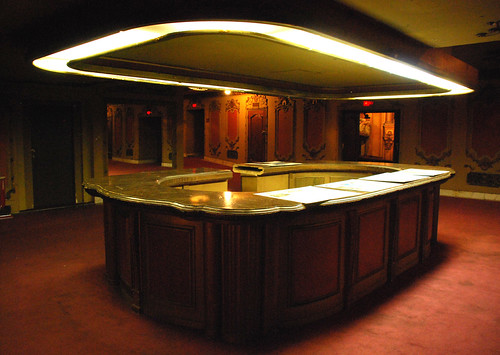
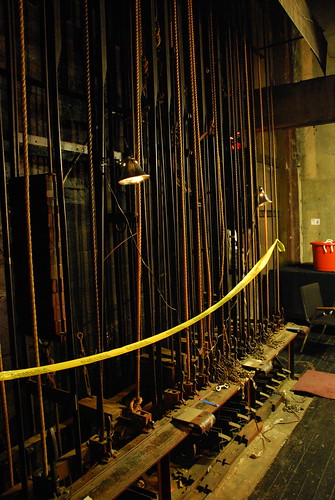

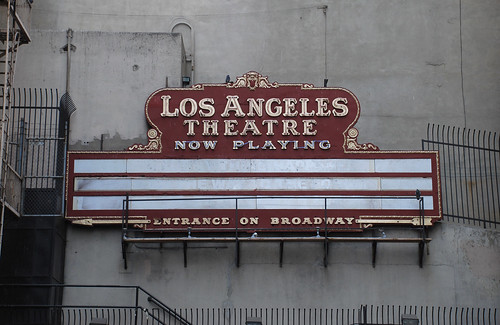
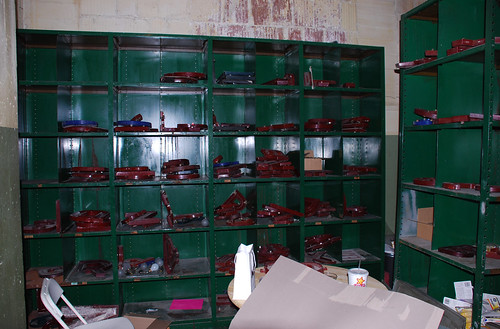
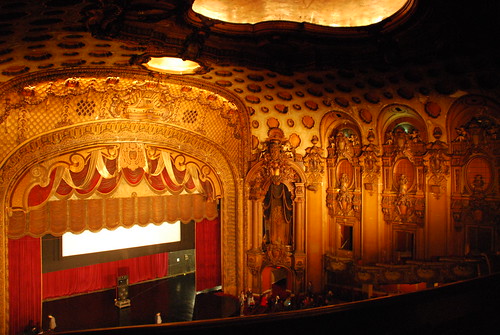
Beautiful photos, worthy of a coffee table book! You really gave the feeling of the interior, especially comparing the old and new.
ReplyDeleteI haven't lately, but I attended the LA Conservancy's first "Last Remaining Seats". Great that at least some of these theaters remain.
Thanks, Darrell. This year's Last Remaining Seats has some movies I'm really looking forward to seeing in these theaters.
ReplyDeleteAn amazing tour, Floyd, thank you. Do you know if the facade to the right of the main part is intact under the white covering? I don't live in LA, but I am going to have to come out for one of the screenings. (Btw, you should have been the one to do the "Los Angeles Then and Now" book--you are always great at lining up perfect comparison shots. Little effort toward that end is made in the actual book I've seen.)
ReplyDeleteThanks, anonymous. No, I don't know if the original facade still remains on the Jewelry Plaza side. Obviously some of the elements have been stripped. Anyone know the answer?
ReplyDeleteFloyd, thank you for this! I've always loved this theatre and wondered what it looked like inside. It's truly stunning.
ReplyDeleteMy understanding is that the Terra-cotta on the right side facade was removed sometime in the late 1940s. A former manager of the Los Angeles Theater was interested in having it recreated, but that was a few years back.
ReplyDeleteHere's a shot from the early 1950s with the facade already gone:
http://jpg2.lapl.org/theater2/00015039.jpg
Wonderful post on a magnificent building. I really appreciate the context for what the Children's Room was like originally--they should bring the caged beasts back! Special events in Los Angeles are always a treat, and the owners have been generous in allowing community groups to use the space. Recently, our family attended Chabad of Downtown's Purim party in the lobby. Who knew that S. Charles Lee was nee Levi? I'll have to tell the OGs (here they are at the theatre):
ReplyDeletehttp://the-ogs.com/purimparty
What a beautiful grand theater. I also owned the 1st theater known as the Los Angeles Theater back in the 1890's. When my daughter Mamie (Mary Barker Modini-Wood) returned from her vocal lessons in Italy in 1881, she became an instant celebrity in the city. Her first opera performance was a sellout in just hours and she was commanded to make many performances throughout her life. I built the Los Angeles Theater on Spring Street between 3rd and 4th in a grand Richardsonian brick structure known as The Perry Building. Later when my daughter married Carlo Modini-Wood, he became manager of the opera house.
ReplyDeleteSadly the building is no longer standing, but I am happy to see the new incarnation of my original theater.
Best Regards,
W.H. Perry
Fantastic post, Floyd. A lot of painstaking research and great photography. Visiting the theater has always been on my "to-do" list, but I never seem to get around to it. Now I see what I've been missing.
ReplyDeleteThanks, Michael. Seriously, check out the Last Remaining Seats. I've got my tickets.
ReplyDeleteWow, those are amazing pics, beautiful! I agree with Darrel, definitely worthy of a coffee table book :)
ReplyDeleteGorgeous! Absolutely gorgeous! And this so makes me sad all over again at the loss of the Fox in San Francisco (and so many other theatres). Absolutely stunning photos, thanks for another excellent posting Floyd!
ReplyDeleteBest Big Orange post yet! Floyd fans should also click on over to the Big Orange Flickr pages to see even more photos. Be sure to view them in the large or even original formats to really appreciate the high level of detail in these photos.
ReplyDeleteThanks, Rock-A-Bye-Baby Momma, rudyfan1926, and Jerry (my favorite folk trio)!
ReplyDeleteI once heard a rumor that they stucco'd over the original decoration on the north side store facade, and that some of it was under the stucco.
ReplyDeleteUnfortunately I didn't have a hammer and chisel with me to find out...
Woweee. You got such great photos. I went to LRS with a crappy camera and got nothing.
ReplyDeleteI love the children's room!
Where is there more info about the April 18th Tower/Rialto events? I'm dying to see the Tower.
g, go to LAHTF.org, the website for the Los Angeles Historic Theatre Foundation.
ReplyDeleteABSOLUTELY fantastic! These are tremendous photos. I just love every photo but the urinals (is the gentlemen's room part of the tour?) are really memorable :). I love the old photo at the end - with Kress and Bullock's signs. It wasn't that long ago that those were still there.
ReplyDeleteWho are you and where have you been all my life? Floyd, you need to put all of this in a book - a very large one. I so appreciate all of the photos and info on all of these beautiful buildings. Some don't appreciate the workmanship that went into them - but you do. I will have many happy hours on Big Orange Landmarks and will cherish each and every one. Thanks for doing all the "legwork" and all the rest. I'm eternally grateful. Sue
ReplyDeleteThanks for that really nice comment, Sue.
ReplyDeleteThis might just be the most beautiful set of pictures EVER! I love all things Hollywood and your blog is incredible.
ReplyDeleteThanks, Lydia.
ReplyDeletehttp://www.youtube.com/watch?v=llUMU1jy_4g
ReplyDeleteThis was like a walk down memory lane! My dad -- Bill Brown -- managed the L.A. for many years ... both before and after WWII ... and it's where my parents met. I grew up thinking everybody's daddy got dressed for work in a tuxedo and stood in the lobby greeting patrons ... and my brother and I spent many, many hours happily ensconced in one of the Crying Rooms with popcorn and instructions to stay put and watch the movie while Daddy worked. Thanks for the memories ... great photos!
ReplyDelete